#03 Network Topology
Go Back
Star
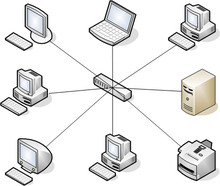
The most popular of network topologies, every individual network device is connected to a central hub. It sends signals from the device to the central hub, which can then connect with the other devices. This star topology is a lot less expensive since it only needs one I/O port, but with more hardware such as hubs and switches it gets more expensive. Star topology is both reliable and not reliable, it is reliable since if one cable fails then that means that only that one device fails. but there is still a single point of failure of with if the central hub goes down then all the devices networks will also go down. The topology is robust in nature, if you can connect a device to a central hub then it will work, there is also no disruptions if you add or remove devices. An issue that could arise is if you have lots of devices that need to be connected to the central hub, then you may need to buy some more hubs or switches.
Bus
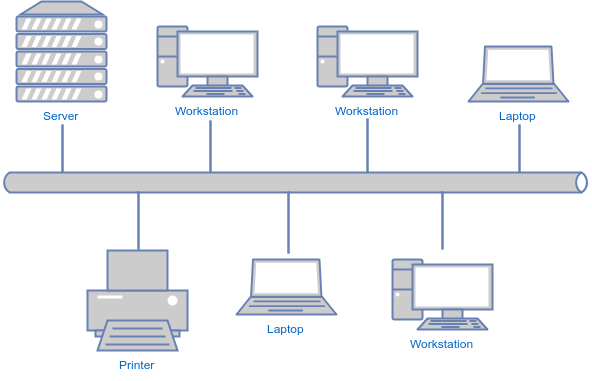
Another network topology is called bus where nodes are put together on a single line, bus topologies are usually used on LANs. Each node (or device) is connected to the wire which is called tapping, so it listens on packets. One of the disadvantages of a bus topology is that every bit of data that goes through the central wire can be seen by the other devices, which could mean that sensitive data that is sent to another pc and be viewed from a different device.
Ring
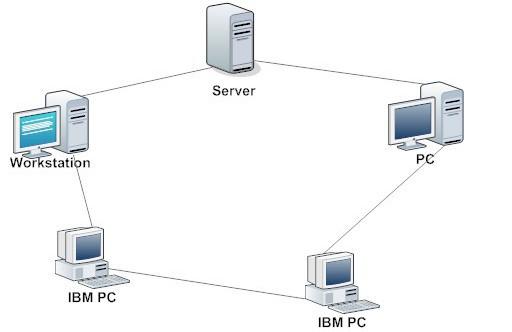
In a ring topology packets are sent around computers in a circle, each computer will look at each packet, and then it will decide if that packet is for their device or not and if it is not then it is passed onto the next device. A main part of a ring topology is that you do not have a central hub which means that one device is connected to 2 other devices which also provides a disadvantage, if one of the devices is to go down then it affects all the other devices and this is where there are two different types of ring. The different rings are single and dual, single uses half-duplex which means that one node is sent and then went it stops sending the other device sends a node whilst full-duplex is where they can both go the same way at the same time and this is where the difference with if one system goes down it can still work with dual ring.
Tree
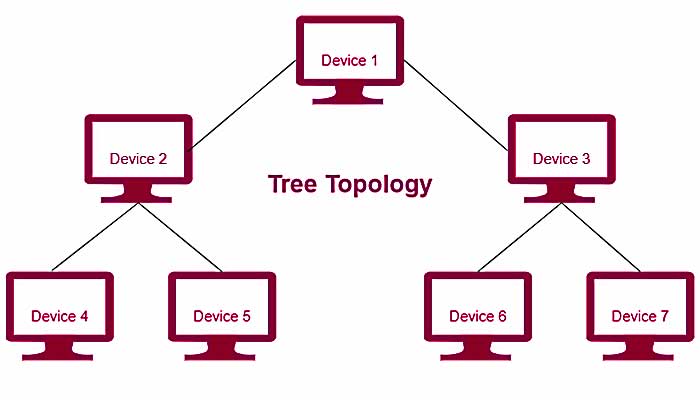
A tree topology is a hierarchical topology where multiple connected devices are arranged like tree branches with one central point being the tree itself. A tree topology is also known as a star bus topology, since it incorporates both a bus topology and a star topology. The bus main wire is considered a trunk which then links into star topologies. Advantages of the tree topology are that the arrangement means that you can add new devices easily on different star topologies. If there is an issue with one of the nodes, that doesn't mean that others will be affected. Tree topology is also highly secure. One of the issues with this network topology is that it is very difficult to configure which also means that it uses lots of wires which overall will affect how much it cost to start up and maintain.
Mesh
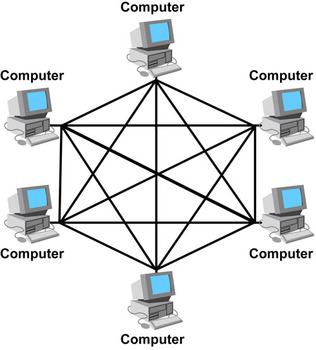
In a mesh topology, each device is connected to every other device in the network, which means that if one of the devices or connections were to go down then it would get to connect from a different device. This topology also provides good privacy and security. Some of the disadvantages include that it is extremlely expensive due to how much wiring goes into it and with the amount of wires it's also very hard to install and configure meshes. An issue that could also arise is that if you have one connection and another that goes down then you won't tell if one goes down but if all the connections go down then it affects multiple devices and will need maintaining what then means that more cost and maintaining takes a long time.
Hybrid
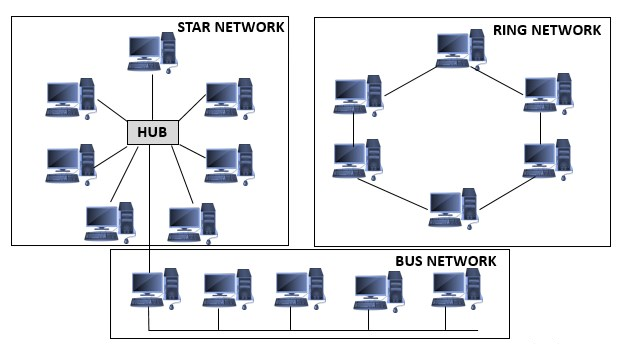
A hybrid topology isn't a specific topology, but instead different topologies put together. Usually these topologies are put together for the advantages of an organisation for example in an office in one of the department's ring topology is employed and another star, topology is employed, connecting these topologies will end in Hybrid Topology (ring topology and star topology) [1]. The advantages of these is that combining multiple can then serve the purposes that you need, but with having multiple topologies can then lead to it being more expensive and it becomes more complex with the larger the network is.
Bibliography
[1] Advantages and disadvantages of hybrid topology (2022) GeeksforGeeks. Avaliable at: https://geeksforgeeks.org/advantages-and-disadvantages-of-hybrid-topology (Accessed: November 14, 2022).